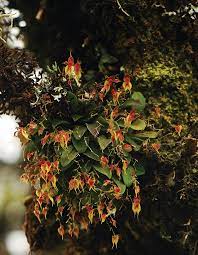In a remarkable feat of botanical exploration, an international team of researchers, including scientists from The New York Botanical Garden (NYBG), has unveiled seven new plant species thriving in the lush cloud forests of the Peruvian Andes. These newly discovered species, adorned with vibrant flowers, are testament to the astonishing biodiversity harbored within the region’s threatened ecosystems.
Published in the journal Phytotaxa, the research sheds light on the genus Blakea, a group of closely related plants in the Melastomataceae family, which boasts striking floral displays. Prior to this study, Peru was home to 24 known species of Blakea. However, the discovery of seven additional species represents a significant expansion of our understanding of Peru’s plant diversity and underscores the urgent need for conservation efforts to protect these fragile habitats.
The researchers classified four of the new species as Endangered and three as Critically Endangered, highlighting the precarious status of these plants in their natural environment. One of the newly identified species, Blakea yumi, was found at just a single location within a protected area, underscoring the urgent need for conservation action to safeguard its survival.
These discoveries are particularly significant given the high levels of endemism found in the Andean cloud forests, where many species are found nowhere else on Earth. However, these unique ecosystems are increasingly threatened by human activities such as agriculture and livestock grazing, placing immense pressure on the delicate balance of plant life.
Using rigorous conservation criteria, the researchers classified the newly discovered species according to their risk of extinction in the wild. They identified Blakea pavida, Blakea quinta, and Blakea yumi as Critically Endangered, while the remaining four species were deemed Endangered.
The identification of these new species was made possible through extensive fieldwork and meticulous examination of plant specimens. Advanced techniques, including scanning electron microscopy, were employed to differentiate the new species from closely related relatives and enhance our understanding of their morphology.
Lead author Robin Fernandez-Hilario and his colleagues highlight the challenges associated with documenting plant diversity in remote and diverse regions like the Andean cloud forests. Despite these challenges, their research underscores the importance of continued exploration and conservation efforts to protect these invaluable ecosystems.
As the global community strives to conserve biodiversity and combat the threats facing our planet’s ecosystems, studies like this serve as a poignant reminder of the rich tapestry of life that surrounds us and the urgent need to protect it for future generations.
